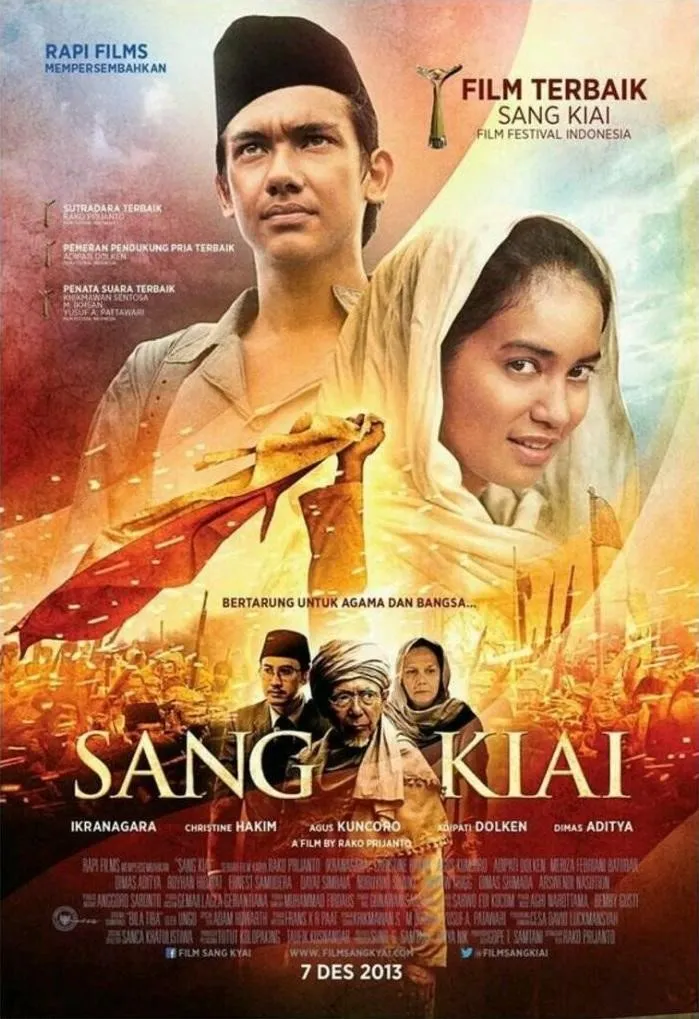Sang Kiai, directed by Rako Prijanto, is a biographical drama recounting the life story of Kyai Haji Hasyim Asy’ari, the founder of Nahdhatul Ulama (NU). The movie primarily portrays the period from the Japanese occupation to the end of his life. The film earned much recognition, including Piala Citra at Festival Film Indonesia and nomination as Best Foreign Language Film at Academy Awards. Sang Kiai is now available on Netflix. In this article, we will provide a synopsis of the film with no spoilers.
Synopsis
The film begins with Pesantren Tebu Ireng Jombang during the Japanese occupation in Indonesia in 1942. Kyai Haji Hasyim Asy’ari is the leader of the pesantren and Nahdhatul Ulama, an organization that garners respect from other ulamas in Indonesia and Java. One day, Japanese soldiers enter the school with a charge against Kyai Haji Hasyim Asy’ari for an attack he did not commit. He agrees to go with them to prevent violence. One student is allowed to join, while two others, including Harun, stay behind. Harun takes the body of his friend, killed by the Japanese soldiers, with him. Kyai Haji Wahid Hasyim, Kyai Haji Hasyim Asy’ari’s son, takes his father’s place as the leader of the school and negotiates with the Japanese government for his release and that of other ulamas.
The Japanese government agrees to release all the ulamas on the condition that they join the independence preparation committee, Majelis Syuro Muslimin Indonesia. The ulamas are required to encourage the people to double the crop production, proclaimed after every Friday’s sermon. As the Japanese government continues to pressure Masyumi, Kyai Haji Hasyim Asy’ari does not oppose the regulation, as he believes that obedience to the just government is the teaching of Rasulullah.
However, when violence occurs due to the Japanese soldiers taking rice from a pesantren in Singaparna, the leading Kyai is cruelly punished, and Kyai Haji Hasyim Asy’ari is appointed as the chairman of Masyumi to avoid further uprisings. The Japanese request that the students become their soldiers and fight abroad. Kyai Haji Hasyim Asy’ari takes the advice of Gus Wahid and allows his students to train militarily but forms their own units called Laskar Hisbullah, not becoming soldiers of Japan.
In 1945, Japan surrenders to the Allies, and Soekarno proclaims independence for Indonesia. However, the Allies, under the command of the Netherlands, return to Indonesia. Kyai Haji Hasyim Asy’ari, supported by other senior ulamas, issues a jihad decree to fight the recolonization and answer Soekarno’s call. Bung Tomo leads the surging resistance in Surabaya, supported by the students of Pesantren Tebu Ireng. The British troops, sympathetic to Indonesia’s independence, cease fire, only to lead to more confusion later on.
When the Dutch troops assault Indonesia again, Kyai Haji Hasyim Asy’ari falls ill and passes away. The school is burned, and the students and their families are expelled. The film concludes with a final scene of the students and their families being chased and shot by the Dutch soldiers.
Conclusion
The Sang Kiai is an impressively crafted biographical film of the esteemed Kyai Haji Hasyim Asy’ari. The strong character portrayal of Kyai Haji Hasyim Asy’ari and the students of Pesantren Tebu Ireng sensitively showcases the Indonesian historical events. The film’s success lies in its ability to retain its historical accuracy while still captivating its audience.




